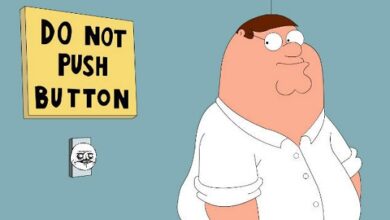What is toxic masculinity Examples Consequences How overcome
Toxic masculinity
Toxic masculinity is a concept frequently used to describe those negative aspects and behaviors of exacerbated masculine traits. It is a term that has been present in society for centuries and has undergone an evolution over time. Its use has a place both in everyday discourse and at an academic level.
Frequently using the expression toxic masculinity can cause some people to misinterpret the concept itself, giving rise to conflicts and communication problems. And it is that the meaning of the term is not quite clear for certain sectors of the population. To discover everything about toxic masculinity, what it is, examples and how to overcome it , in oneHOWTO we recommend that you continue reading this article.
Origin of Toxic masculinity
Despite the fact that the definition of toxic masculinity has varied over time, there is a consensus in establishing it as the constellation of regressive masculine traits at a social level and that serve to promote the devaluation of women, the domination of men, violence nonsense and homophobia.
In today’s society, the population uses this term to describe the exaggerated masculine traits accepted by many cultures and even glorified by the majority. It is a harmful concept of the masculine , which places a significant importance on masculinity that is based on strength, self-sufficiency, emotionlessness, sexual virility and dominance.
According to the values derived from traditional toxic masculinity, the man who does not exhibit or sufficiently demonstrate these traits falls below the category of “real man”. An overemphasis of masculine traits leads to detrimental imbalances in subjects trying to live up to those expectations, with behaviors including :
- sexual assaults.
- Aggression or loss of control.
- Hype competitiveness.
- Suppress emotions.
- Isolation.
- Tendency to violence.
- Control or dominate others.
- Deserve.
- Lack of empathy.
- Sexism and chauvinism.
The concept of toxic masculinity originates from the mythopoetic men’s movement of the 1980s. Founded by men for men, its goal was to offer men an outlet for their manhood. Members of this movement believed that if they could not act on these masculine traits, they would ultimately manifest as aggression towards women, or chauvinism .
Examples of toxic masculinity
Television, social behaviors, and many everyday situations give rise to examples of toxic masculinity such as the following:
- Boys don’t cry : repression of emotions in men, relegating the emotional to women and being weak for it.
- Blue clothes and football : boys’ things. The boys are the ones who play soccer at recess and wear blue clothes.
- Untouchable sexual desire – Another example of toxic masculinity is the virile male model whose manhood is valued by the number of sexual relations and conquests.
- Sissy, faggot and babe : men of the first and second category. Use everything related to the feminine and homosexual to discredit.
- Co- responsible man, soft man : this example of toxic masculinity focuses on the decision to share housework, the man who does the shopping or carries the son’s cart is weak for not imposing his authority. The woman takes advantage and abuses this weakness.
Consequences of toxic masculinity
Any young man or young man whose view of the world is through the very narrow lens of toxic masculinity will come to feel the need to live up to exaggerated masculine traits in order to gain false social acceptance.
Now, how does toxic masculinity affect? Without any type of control and the behaviors derived from this term, a series of consequences can occur, such as the following:
- Lack of discipline at school.
- Harassment or bullying.
- Committing crimes that carry prison time.
- academic problems.
- sexual assaults.
- Domestic violence .
- Addictions.
- Risk behaviors.
- Psychological traumas.
- Suicide.
- Lack of genuine friendships or connections.
As a result of the consequences of toxic masculinity described above, physical health can suffer. Exacerbated masculine traits prevent certain men from asking for help to solve some health problems , as well as other potential problems.
And it is that, for men with exacerbated masculine traits, seeking help generates feelings of weakness, insufficiency and, ultimately, a perception of being less of a man.
How to overcome
While some social, religious, and political groups may provide guidelines for promoting a healthy form of masculinity, it is best for a man to stick to his own definition, unless he harms himself or others.
A new definition of what it means to be a man should include general human experiences such as the following:
- Interdependence.
- Experiencing a wide range of emotions openly.
- Cooperation.
- Vulnerability.
- Tenderness.
- Amiability.
These values do not imply that all traditional masculine traits have to be abandoned, since including certain characteristics such as adventure and strength can contribute to the definition of one’s own masculinity for some people.




